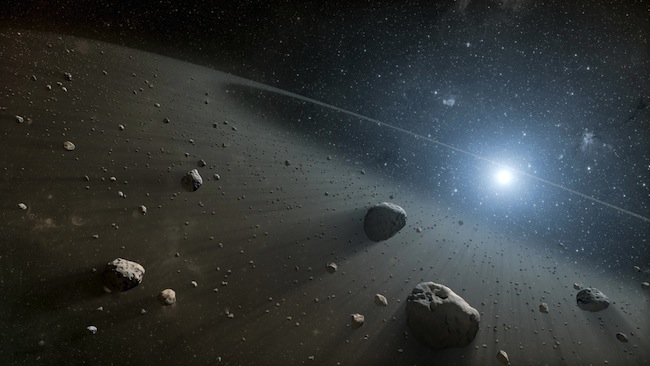Cosmos watch: Earth like planet spotted but Apophis is going to blow us up
FIRST the good news:
“Using publicly available data from NASA’s Kepler space telescope, astronomers at the Harvard-Smithsonian Center for Astrophysics (CfA) have found that six percent of red dwarf stars have habitable, Earth-sized planets. Since red dwarfs are the most common stars in our galaxy, the closest Earth-like planet could be just 13 light-years away.”
The bad news is that 13 light years is pretty far. And next week an asteroid could hit Earth:
At its closest approach, the asteroid will come within 17,000 miles of Earth. That’s close enough, in astronomical terms, Lewis says, ‘to give you a haircut without breaking your skin. This is really close.’ The asteroid will pass within the 22,000-mile orbit of geosynchronous communications satellites, but above the International Space Station, which orbits between 230 and 286 miles from Earth.”
Greg Bear wonders:
Named after the evil Egyptian serpent god Apophis, lord of chaos and darkness — and recently dubbed the “doomsday asteroid” — it flies past Earth every seven years. This year, its 1,000-foot bulk approached to within 9 million miles. In 2029, it will swoop in close enough to put some of our orbiting satellites in peril — 20,000 miles. In that year, no doubt Apophis will arouse even more attention, because it will be visible in the daytime sky. In 2036, it will probably pass by at a reassuring 14 million miles.
Yet there’s always a possibility we don’t have these measurements exactly right. Something could happen at any point in Apophis’ orbit to modify its course, just a smidgen. A tiny collision with another object, way out beyond Mars? What could change between now and 2029, or during any orbit thereafter?
Apophis masses at more than 20 million tons. If it hit Earth, the impact would unleash a blast the equivalent of over a billion tons of TNT. That’s not an extinction event, but it could easily cause billions of deaths and months, if not years, of climate disruption.
It’s the drone to end all drones…
Image: Nasa undated handout artist’s impression of the asteroid belt surrounding the star Vega, the second brightest star in the northern night sky, which may have a family of planets similar to the Sun’s, say scientists.
Issue date: Wednesday January 9, 2013. Astronomers have discovered evidence of an asteroid belt surrounding the star like the one that circles the Sun. If confirmed, it means Vega is likely to have a solar system containing rocky planets similar to Earth or Mars.
Posted: 7th, February 2013 | In: Technology Comment | TrackBack | Permalink



